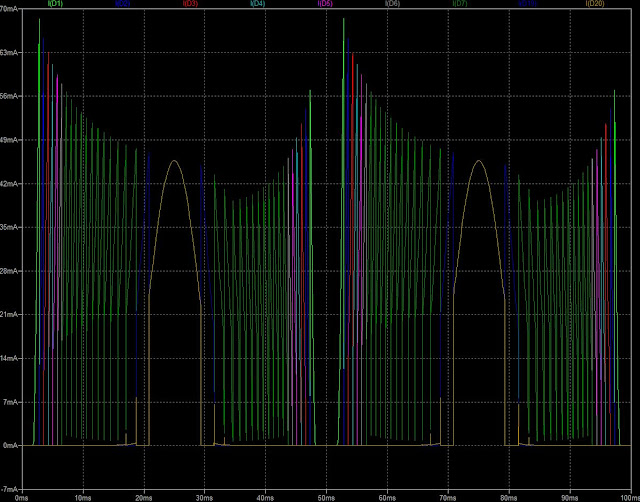A single USB 2.0 port has max current limit of 0.5A. Thus, when multiple devices (some devices are power-hungry, such as a headphone amplifier) are connected via a USB hub, it can easily hit the max current limit. Fortunately, some USB hubs take external 5V input, which can make up the limited current of the source USB port.
I was one of those who were using a lot of devices, and USB hubs were essential to me (currently, more than 20 are connected to my PC via three USB hubs). One day, I touched my USB headphone amplifier by chance while the PC was powered off, and I was a bit surprised because the amplifier was so warm. That was because the device kept draining power from the external 5V input of the USB hub, even when the host PC was off. It didn't seem right to me, so when I directly connected the amplifier to my PC's USB port, not through the USB hub, no such a thing happened again.
Okay, so this is my analysis. The following table shows how the voltage sources of a conventional USB hub are routed to the output USB ports.
|
|
|
Ext. 5V |
|
|
|
Connected |
Disconnected |
|
|
USB 5V |
Connected |
Ext. 5V |
USB 5V |
|
Disconnected |
Ext. 5V |
0V |
|
As you can see, the external 5V input is routed to the output USB ports all the time, even when the source USB is disconnected (or the host PC is off).
However, voltage routing of a USB hub that I thought ideal was like this:
|
|
|
Ext. 5V |
|
|
|
Connected |
Disconnected |
|
|
USB 5V |
Connected |
Ext. 5V |
USB 5V |
|
Disconnected |
0V |
0V |
|
I spent some time trying to find out USB hubs that work as the above table. I purchased and tested at least 10 USB hubs of different brands, but unfortunately, none of them worked in the way as in the above table.
Well, now it's clear what I should do. Because there is none on the market, I should make it for myself.
Description
Output USB power is cut off when the master USB is unplugged.
- Master DC input: USB Type A
- Slave DC input: 5V DC adatper
- Output: USB Type B
Parts:
Si2323 x 1
STP80PF55 x 1
DC adapter jack
47k x 2
20k x 1
100k x 1
0.1u x 1
USB cable


















